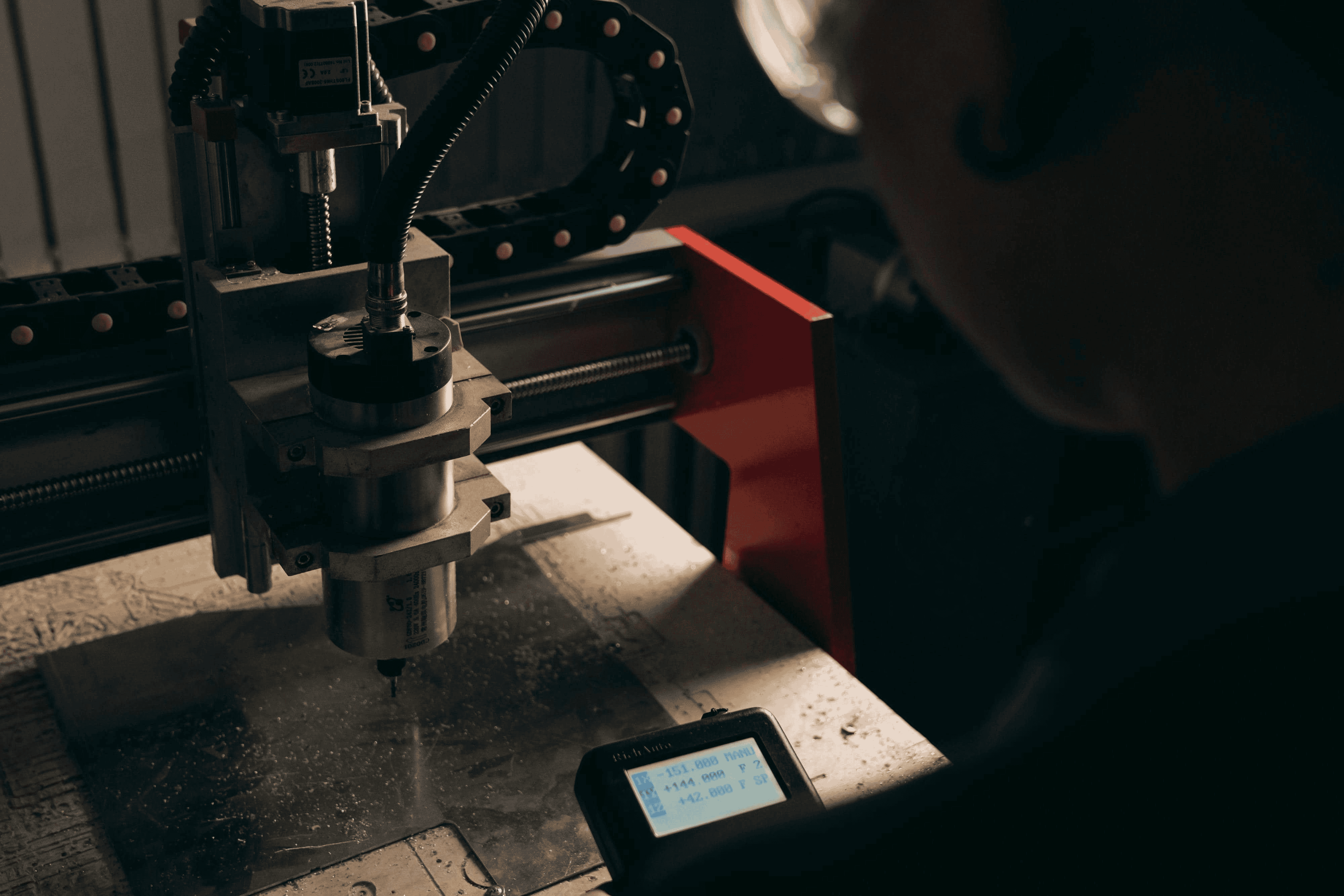Custom Fabrication

Metal bending services transform flat sheet or plate into functional shapes through controlled force and tooling. Most work falls into three core methods: air bending, bottoming, and coining. Air bending is the most common, using a punch and V die to create an angle where the material floats between contact points, which allows flexible angles with the same tooling. Bottoming seats the material into the die to tighten angle control while increasing tonnage demand. Coining compresses the material at the bend line, locking the angle with high force for extreme repeatability on small radii.
Precision metal bending services on a CNC press brake in Northwest Arkansas for custom automotive and industrial parts
Accurate metal fabrication and bending depends on three calculations: bend allowance, bend deduction, and the K factor. Bend allowance estimates the arc length in the bend region, bend deduction adjusts flat patterns so finished dimensions land on spec, and the K factor tracks how the neutral axis shifts during forming. Springback matters too. After unloading, metals relax a few degrees. To overcome this, operators overbend slightly or choose tooling that reduces elastic recovery. Tooling selection, grain direction, and inside radius all influence how predictable the result will be.
When planning steel bending and fabrication, punch tip radius and die opening must match material thickness and desired inside radius. A common starting guideline is die opening at eight times material thickness for air bending. Tighter radii require stronger tooling, more tonnage, and careful attention to cracking on hard steels or heat treated alloys. Long parts also require backgauge support to prevent twist and taper across the length.
Different metals behave differently. Mild steel forms easily and handles tight radii. Stainless tends to spring back more and may gall tooling without proper protection. Aluminum is softer, often requiring larger radii to prevent surface marks, and sometimes benefits from film protection. Grain orientation matters as bending across the grain reduces cracking risk, especially in thinner gauges.
Good practice includes validating angles with calibrated gauges, verifying flat to formed lengths against the print, and checking parallelism across long flanges. Tolerance expectations vary by complexity and length, but many shops target plus or minus one degree on angles and plus or minus ten thousandths on critical dimensions for shorter features. Documented first article checks and clear communication on acceptable ranges prevent rework.
Selecting a provider for metal fabrication and bending starts with capability. Look for CNC press brakes with sufficient tonnage and bed length to cover your parts, plus segmented tooling for box forms and return flanges. Software driven backgauges enable complex sequences, hems, joggles, and offsets with better repeatability. Ask about file formats, such as DXF, STEP, or native CAD, and whether the team performs design for manufacturability reviews before cutting flat blanks.
Consider downstream steps that pair with steel bending and fabrication. Accurate bends depend on precise blanks. Laser or plasma cutting tolerance, kerf compensation, and edge quality all affect bend line location and resulting angles. If parts require welding after forming, consistent bend radii and flange lengths simplify fit up and reduce distortion. Finishing options like powder coat or anodize influence corner reliefs and hole to edge distances, which should be planned before nesting and cutting.
For complex assemblies, sequence planning matters. Some parts must be bent before others to avoid tool collisions or trapped flanges. A capable shop will simulate programs, check collisions, and set up part support to minimize marking on visible faces.
To understand how a full build comes together beyond forming, explore our custom fabrication overview. You can also review our specific fabrication services for cutting, forming, and finishing options, and learn about our approach on why choose OZK Customs.
A smooth workflow begins with a clear print and flat pattern. The team confirms bend deductions, sets inside radii, and establishes grain direction for strength or cosmetic priority. Once blanks are cut, operators stage tooling and program the bend sequence, using test coupons to confirm angles and springback before running production. For sheet parts with multiple hems or offsets, hemming dies and progressive setups streamline cycles without sacrificing accuracy.
Assemblies that must mate with machined components or seal against gaskets often demand tighter angular control, parallelism, and flange length accuracy. This is where consistent tooling, calibrated machines, and controlled material lots show their value. When in doubt, request a capability study on representative parts.
Long channels and large radius transitions introduce their own challenges. Crowning systems or shim plans help keep angles even across the length. For large radii, rolling or segmented bump bending can produce smooth arcs while maintaining dimensional targets. Proper support prevents oil canning and twist, especially on thinner gauge materials.
Solid documentation makes future runs painless. Save bend programs, note material batches, and log any angle corrections used to counter springback. With this data on file, reorders run faster with fewer checks, lowering cost and lead time.
OZK Customs applies these fundamentals daily in Fayetteville Arkansas, shaping brackets, racks, panels, and structural members with careful attention to radii, grain, and finish. Our metal bending services pair with cutting, welding, and assembly to deliver parts that install cleanly in vans, overland rigs, and commercial builds. If you are operating in Northwest Arkansas or shipping nationwide, expect clear communication, accurate timelines, and formed parts that match your prints without surprises.
If your next project needs dependable metal fabrication and bending, send us your files and target timelines. We will review geometry, optimize radii for strength and appearance, and provide a transparent quote that reflects the most efficient path to production.
Ready for accurate parts with clean fit and repeatable bends? Share your drawings and timelines. OZK Customs will review geometry, recommend materials and radii, and deliver a clear quote with build steps. Start your project today and get precision formed components built in Fayetteville Arkansas.
ADDRESS:
6159 E Huntsville Rd, Fayetteville, AR 72701
PHONE:
(479) 326-9200
EMAIL:
info@ozkvans.com